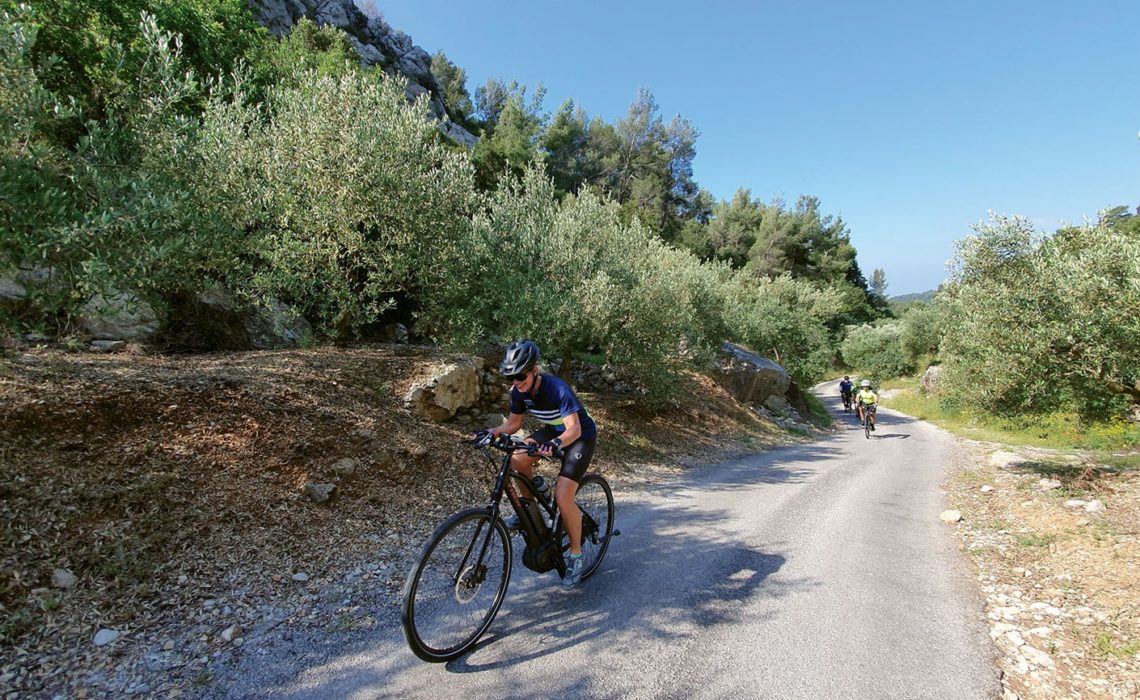
You might also like:
The rise in active vacations has fueled a steady boom in bike tours, and tour operators say the mainstreaming of electric bikes, or e-bikes, promises to continue feeding that growth by opening trips to a host of new audiences and markets.
“It’s a game-changer,” said Wendy Carter, founder of the Carter Co., noting that in the past, many couples wouldn’t choose a bike vacation because inevitably, one would be a much more serious cyclist than the other.
With e-bikes, she and other bike tour operators say, the less experienced partner can take on longer rides and tougher terrain with ease because when the pedaling gets too rough, they can flip to a battery-operated assist.
“I always call it the marriage counselor,” said Tania Burke, president of Trek Travel, the tour arm of Trek bicycles.
Likewise, the leveling of biking fields is also fueling interest from more multi-generation families and older travelers, the tour operators say.
For instance, David Mebane, founder of Fat Tire Tours, which offers day tours of cities around the world, said he, his wife and their 11- and 13-year-old daughters took e-bikes for an 11-mile ride around the Colorado mountain town of Aspen this summer.
“We cruised and talked the whole time,” he said. “We didn’t break a sweat. There is no way my family of four could have experienced that without an e-bike.”
E-bikes are hardly new. Trek and operators like the Duvine Cycling & Adventure Co. said they’ve been offering them since 2009. But the uptake was a bit slow.
“It’s sort of like the cellphone,” said Andy Levine, founder and CEO of Duvine. “First there was the flip phone, then the [iPhone]. … The technology just keeps getting better.”
It also took a while for e-bikes to become “cool,” he said.
“At first it was, like, ‘Don’t tell me to get on an e-bike,’ or ‘Don’t tell anyone I’m on an e-bike.’ Now it’s, like, ‘Look what I have!'”
Indeed, Burke said that while e-bikes have been prevalent in Europe for years, their uptake in the U.S. has been much slower.
“I ride my bike to work every day,” she said. “Three years ago I saw one [e-bike] once a month. Last year, I’d see one once a week. Now I see one every day.”
Besides offering a level biking field to travelers with different cycling skills, tour operators say it’s helping them to open more markets.
Carter, who specializes in “gentle cycling” luxury tours in the U.K. and continental Europe, said she can now expand into areas where before “we would never dream of making a tour because it was too hilly.”
For example, she said, the company now offers a biking tour along the coast in Cornwall, which has steep inclines and drops.
Before e-bikes, she said, it’s the type of route only a triathelete-class cyclist could ride.
Levine said he believes the e-bike market will overtake traditional bicycles before too long. “I think it’s going to be a bigger market in five to 10 years than regular bikes, not just for tourism but in the regular world,” he said.
Still, e-bikes have their challenges, operators said. They are heavier than traditional cycles, making it more difficult to transport them. They are also more expensive and more complicated to maintain.
“The challenge at the beginning was battery life,” Mebane said. “And what was challenging for someone like myself was when a regular bike breaks, I can fix it. When an e-bike breaks, I can’t.”
Still, he said, a new generation of lithium batteries and other advances have made the e-bikes “as robust and strong as a regular bike.”
And like Carter, he said that the bikes have enabled him to look at new markets, like hilly San Francisco.
Crystal River Cruises recently discontinued offering e-bikes on its European cruises, citing safety issues for passengers not familiar with using them.
But Carter said that for anyone who knows how to ride a bike, they are not difficult to operate.
“The point about an e-bike is, it’s not like a scooter. You can’t just sit on it and do nothing,” she said. “You’ve got to have a degree of physical activity in order to pedal. But when you get to that point on the hill where you think, ‘I can’t go on,’ you just flip the switch.”
How much impact e-bikes have had on the tour market is hard to measure. Burke said she is not aware of any data on the size of the bike-tour sector, although she asserted that it is among the faster-growing areas of the adventure travel segment, which itself is among the fastest-growing areas of all travel.
Levine said he has heard revenue estimates for bike tours that range from $200 million to $300 million to as high as half a billion dollars.
Burke said Trek has been growing by double digits the past few years. Similarly, Duvine said his business has been growing in the 15% to 20% range, and Carter reported that after being fairly flat for the first 10 years, her company has seen a “torrent” of growth the past decade.
“I can’t see it ending,” Carter said. “Because I think lots of different things feed into it. People don’t like what the sun does to their skin, so lying on the beach holidays are less popular. Young people want experiences. They want to explore.”
Source: travelweekly.com
